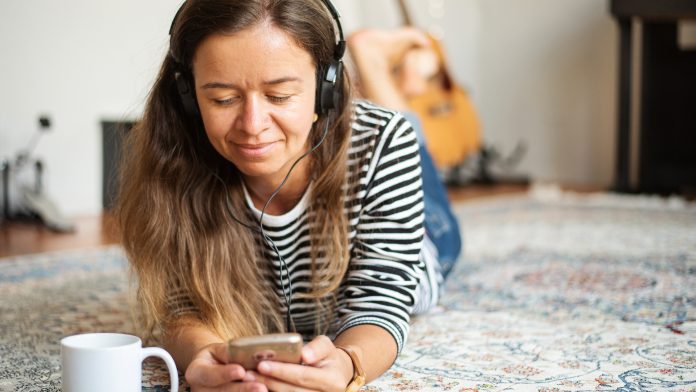
A new trial discovers that a virtual reality app could potentially help sufferers of common phobias like dogs and spiders.
Associate Professor Cameron Lacey, from the Department of Psychological Medicine at the University of Otago, headed a trial studying common phobias and whether a smartphone app treatment programme could help patients. The app combined virtual reality (VR) 360-degree video exposure therapy and cognitive behavioural therapy (CBT).
Common phobias, including fear of flying, can be debilitating. Symptoms may only arise when you experience the phobia, but they can include dizziness, nausea, and sweating.
The results from the trial are published in the Australian and New Zealand Journal of Psychiatry.
A smartphone app to treat common phobias
To conduct the study, a total of 129 people aged between 18-64 years took part in a six-week randomised control trial in May and December 2021. The participants required one of five common phobias – flying, heights, needles, spiders or dogs. To monitor their progress, the participants filled out questionnaires weekly.
“Participants experiencing all five types of phobia showed comparable improvements in the Severity Measures for Specific Phobia scale over the course of the trial. The average severity score decreased from 28/40 (moderate to severe symptoms) to 7/40 (minimal symptoms) after six-weeks. There were no participant withdrawals due to intervention-related adverse events.
“The oVRcome app involves what’s called ‘exposure therapy’, a form of CBT exposing participants to their specific phobias in short bursts, to build up their tolerance to the phobia in a clinically-approved and controlled way,” Associate Professor Lacey said.
“Some participants reported significant progress in overcoming their phobias after the trial period, with one feeling confident enough to now book an overseas family holiday, another lining up for a Covid vaccine and another reporting they now felt confident not only knowing there was a spider in the house but that they could possibly remove it themselves.”
What did the programme include?
The app included standard CBT elements like psychoeducation, relaxation, mindfulness, cognitive techniques, exposure through VR and a relapse prevention model. To test the participant’s phobias, the app included a library of VR videos that involve the common phobia. They could also alter the exposure level.
“This means the levels of exposure therapy could be tailored to an individual’s needs which is a particular strength. The more traditional in-person exposure treatment for specific phobias has a notoriously high dropout rate due to discomfort, inconvenience, and a lack of motivation in people seeking out fears to expose themselves to. With this VR app treatment, triallists had increased control in exposure to their fears, as well as control over when and where exposure occurs,” added Associate Professor Lacey.
The researchers noted that the trial was novel due to the cost-effective availability of the app and headsets and because multiple phobias were tested. They said comparable studies utilised high-end VR devices, only available in research and limited clinical settings.
“An estimated 10% of New Zealanders have been hesitant to take part in the government’s COVID-19 vaccination programme due to needle phobia. This hasn’t been helped by a significant shortage of psychologists. A petition to Parliament last year claimed New Zealand is 1,000 psychologists short, causing ballooning wait times nationwide and making it difficult for people to access help if needed. We need to further research and explore the use of more cost-effective, easily-accessible, home-based solutions such as this oVRcome app, to provide people with the treatment and support they need,” concluded Associate Professor Lacey.









